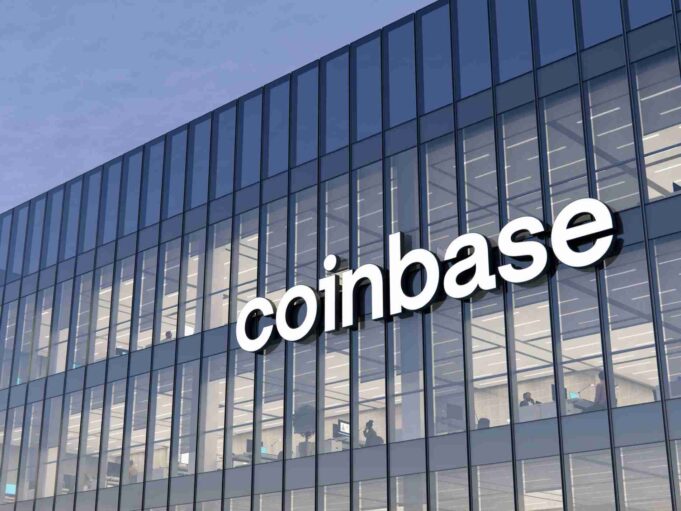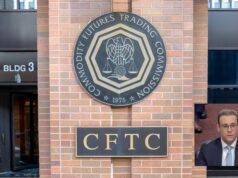As the European Union moves closer to the full implementation of its Markets in Crypto-Assets (MiCA) regulations, major players in the cryptocurrency industry are aligning their operations with these new rules. Among them is Coinbase, one of the largest cryptocurrency exchanges globally. The exchange announced its plan to delist non-compliant stablecoins in Europe by the end of 2024. This includes the possible removal of Tether’s USDT, currently the largest stablecoin by market capitalization. The decision underscores a broader transformation in the European crypto landscape. Regulatory compliance is becoming a key factor in shaping the future of digital assets.
MiCA: A Game-Changer for European Crypto Markets
The MiCA regulations are part of the European Union’s broader initiative to standardize the treatment of digital assets across member states. MiCA aims to provide a comprehensive regulatory framework that includes supervision, consumer protection, and anti-money laundering provisions. Crucially, stablecoin issuers must now obtain an e-money license to operate within the European Economic Area (EEA). It ensures that issuers underwrite these assets with sufficient liquid reserves. They will also be subject to greater oversight.
The regulation is set to be fully implemented by December 31, 2024. However, the rules for stablecoins came already into effect in June 2024. These rules place stablecoin issuers like Tether and Circle (issuer of USDC) under the supervision of the European Banking Authority (EBA). The result is a clear push for stablecoins to align with traditional financial safeguards. That shift will have profound implications for the crypto market.
Coinbase’s Proactive Approach
In response to MiCA, Coinbase has announced that it will cease supporting non-compliant stablecoins for its European customers by the end of 2024. This move is a significant step in ensuring that the exchange remains compliant with EU regulations. The most notable asset potentially impacted by this decision is Tether’s USDT. It has yet to receive the required regulatory approval to operate in Europe.
Coinbase’s decision is not entirely surprising. The exchange has a history of promoting compliance, having co-created the USD Coin (USDC) in partnership with Circle in 2018. USDC has already become MiCA-compliant, offering Coinbase a regulatory-friendly alternative for its users in the EU. Coinbase is encouraging its European users to convert their holdings from non-compliant stablecoins to USDC. That signals a strategic shift toward assets that meet regulatory standards.
Broader Implications for the Market
The removal of non-compliant stablecoins like USDT could cause some market disruption, particularly given USDT’s dominant role in crypto trading volumes. However, it also opens the door for compliant alternatives to capture greater market share. USD Coin (USDC), for example, is poised to become the stablecoin of choice in Europe. Other emerging stablecoins, such as Eurite (EURI), are also gaining traction in the regulated market.
Moreover, other major exchanges are making similar adjustments to their offerings. Binance, for instance, has already begun introducing EU-compliant stablecoins and adjusting its platform to meet MiCA requirements. This shift toward compliance reflects a broader trend in the crypto industry. Regulators across the globe, not just in Europe, push for more robust oversight of digital assets.
The Road Ahead for Coinbase
Coinbase’s proactive stance on MiCA compliance could serve as a blueprint for other exchanges operating in the EU. By focusing on offering fully regulated stablecoins, the exchange is positioning itself as a leader in the maturing European crypto market. The short-term impact may include liquidity disruptions and forced asset conversions. Still, the long-term outlook suggests a more stable and transparent market for institutional and retail investors alike.
>>> Read more: Gemini Exits Canada Amid Tightening Crypto Regulations
As MiCA transforms the regulatory landscape, the relationship between crypto platforms and regulatory frameworks is evolving. Coinbase’s strategy of aligning its stablecoin offerings with these new regulations is just the beginning of a broader shift in how crypto exchanges operate in Europe. With MiCA setting the standard, compliant assets like USDC will likely dominate the future of stablecoins in the EU. This paves the way for a more structured and regulated digital asset ecosystem.
Readers’ frequently asked questions
What is MiCA?
MiCA, or the Markets in Crypto-Assets regulation, is a comprehensive legal framework designed by the European Union to regulate digital assets, including cryptocurrencies and stablecoins, across its member states. The regulation aims to provide a standardized set of rules for the entire EU. It ensures that crypto-asset issuers, exchanges, and related services comply with strict guidelines on consumer protection, market integrity, and financial stability. One of the key aspects of MiCA is the regulation of stablecoins. These must now have backing in liquid reserves and meet specific criteria to operate within the European Economic Area (EEA). Issuers of these assets must obtain an e-money license from regulators such as the European Banking Authority (EBA). MiCA is intended to reduce risks such as fraud, money laundering, and financial instability within the crypto space.
When will MiCA come into force?
MiCA is being implemented in stages. The regulations for stablecoins came into effect in June 2024. The rest of the framework is scheduled to be fully operational by December 31, 2024. This gradual rollout allows the industry time to adjust to the new compliance requirements. Exchanges like Coinbase are already making changes in preparation for these regulations. They plan to delist non-compliant stablecoins like USDT by the end of 2024.
How will MiCA affect stablecoins in Europe?
MiCA will significantly impact the issuance and trading of stablecoins in Europe. Under this regulation, stablecoin issuers must maintain adequate liquid reserves and obtain authorization to continue operating. As a result, stablecoins like Tether (USDT), which have not yet met these requirements, are likely to be delisted from exchanges such as Coinbase. This will push European users toward compliant alternatives like USD Coin (USDC), which already meets MiCA’s standards. In the broader sense, MiCA will enhance market transparency, prevent market manipulation, and provide clearer rules for consumer protection. This is expected to reduce risks and provide a more secure environment for retail and institutional investors in the cryptocurrency market.
What Is In It For You? Action Items You Might Want to Consider
Evaluate Your Exposure to USDT
With Coinbase preparing to delist USDT and other non-compliant stablecoins in Europe by the end of 2024, now is the time to assess your reliance on these assets in your trading strategy. If you frequently trade using USDT pairs, you should consider converting to compliant alternatives like USD Coin (USDC), which already meets MiCA’s standards. This shift could help you avoid potential liquidity issues or forced conversions closer to the deadline
Monitor Regulatory Developments in Real-Time
As MiCA regulations continue to roll out, staying informed on any updates from stablecoin issuers like Tether is crucial. Tether has yet to obtain the required licenses to operate under MiCA, and developments could affect your ability to trade with USDT. Keep a close eye on announcements from both Coinbase and Tether, as regulatory decisions could impact other exchanges and stablecoins.
Diversify Stablecoin Holdings
If you’re holding a significant amount of non-compliant stablecoins, consider diversifying into compliant options. Stablecoins like USDC or newly emerging MiCA-compliant options such as Eurite (EURI) are already gaining traction in Europe. This move could protect you from potential market disruptions and position you to capitalize on growing liquidity in compliant stablecoin markets










